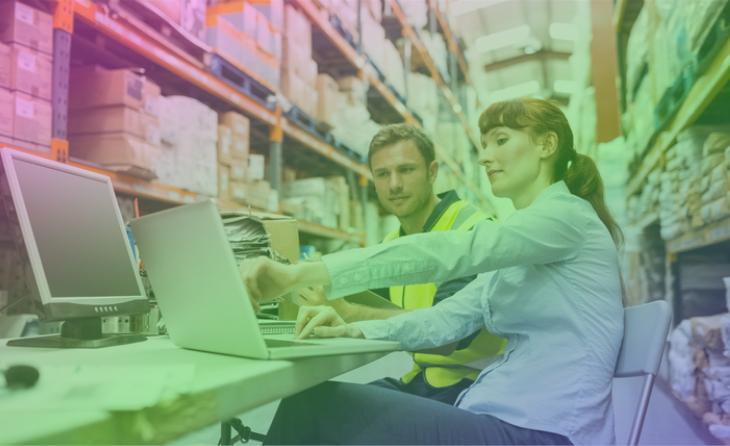
As retail customers return to stores, your back-office and warehouse teams need to be as empowered and nurtured as their frontline colleagues. Agile technology will be vital to achieving this, and to creating the joined-up, ultra-responsive experience customers now routinely expect across channels.
If you’ve read our first blog in this series, Retail? It’s a New World, you’ll already have a powerful sense of how the in-store experience (and expectations) of customers and frontline staff has changed in the wake of economic lockdown, and how portable, supple technology (as epitomised by the Microsoft Surface range) is more central than ever to meeting their needs.
In this blog, we explore how vital that same technology is to the effectiveness and morale of your back-office and warehouse teams. For retailers looking to succeed in a transformed sector, two things are abundantly clear. Firstly, back-office staff need to be brought to the forefront – to be, and to feel, like an integral part of your wider organisation, and your brand. Secondly, retailers who fail to adapt to customers’ heightened in-store expectations will pay a heavy price.
Right now, the in-store experience has never been more important
Most retail customers, starved by lockdown of the tactile pleasures of exploring physical products in a physical environment, are desperate to return.1 But their expectations of what physical shopping means has been changed for good by months of online shopping.
In particular, the apparent end-to-end seamlessness of online purchasing and delivery is now a base expectation for any retail interaction. If your store doesn’t “talk to itself”, especially about the basics such as stock availability, and if your processes aren’t sufficiently coordinated for products to be sourced pretty much at once, expect customer tolerance to be low. However slick your frontline operation, each store (and indeed your wider organisation) has to function as an integrated whole.
The upshot? The “last mile” has to be absolutely right
Managing demand across different retail channels has traditionally been a labour-intensive2 challenge, with inefficiencies3 a constant threat. Now more than ever, customers expect free, fast delivery of goods, in-store and out, with the onus squarely on the brand that wants their business.4 The process also functions in reverse: consumer returns cost British stores over £7bn in 2019, with 39% of those returns happening in-store.5
Clearly, collaboration and understanding between customer, frontline and back-office functions has to be instinctive and easy. Inventory data and insight must flow in both directions, aided by cutting-edge connectivity and communication tools that generate trust, familiarity and rapport between everyone in your team.
What do your back-office colleagues really need?
Given how critical they are to the day-to-day functioning of any retail organisation, it’s surprising how overlooked warehouse and other staff can end up feeling. And yet without their ability to connect both your supply chain and your storefront, costs spiral and at worst, your business simply doesn’t function.
In a healthy retail operation, the ability of back-office staff to thrive in their role is constantly monitored and optimised. Since their work is task-based and speed is of the essence, technology needs to be as portable as it is powerful, providing them with the tools and connectivity to work efficiently while achieving a sense of wellbeing, control and flow.
Any solution must also connect them fully to the rest of their worksite, and the organisation as a whole. Technology is instrumental in helping them feel supported and valued, with the potential to grow and progress in their current role and beyond. Like their frontline colleagues, back-office staff have been deeply affected by the job insecurity, frequent shift changes and unpredictable workloads brought about by the pandemic – leading 84% of retail workers to suffer declining mental health in the last year.6
Intuitive, integrated and mobile: meeting their needs with Microsoft Surface
Microsoft Surface’s slim, light, yet robust devices are a practical solution to the most demanding of retail environments, especially when connected by an enterprise-level cloud solution like Microsoft Azure and transformative apps like Dynamics365 Commerce, which integrate seamlessly with your preferred line-of-business software.
As well as connectivity and infrastructure, Microsoft Surface knows the retail territory and has designed its devices accordingly, with HD screens, batteries that last a full shift, integrated bar code readers and a full menu of heavy-duty accessories, from vehicle and wall mounts to UAG Plasma cases and ways of embedding access to your ERP system in a forklift cockpit.
Microsoft Surface is also ideal for connecting otherwise isolated users with your wider organisation, be it via access to shift rotas or the ever-popular Microsoft Teams. The result? A more joined-up and responsive retail operation all round. Find out more.
Sources:
1Footfall begins to recover as shops reopen (brc.org.uk)
2BRC Podcast -Navigating new consumer priorities post-pandemic
32021 Trends: How will the retail warehouse adapt?